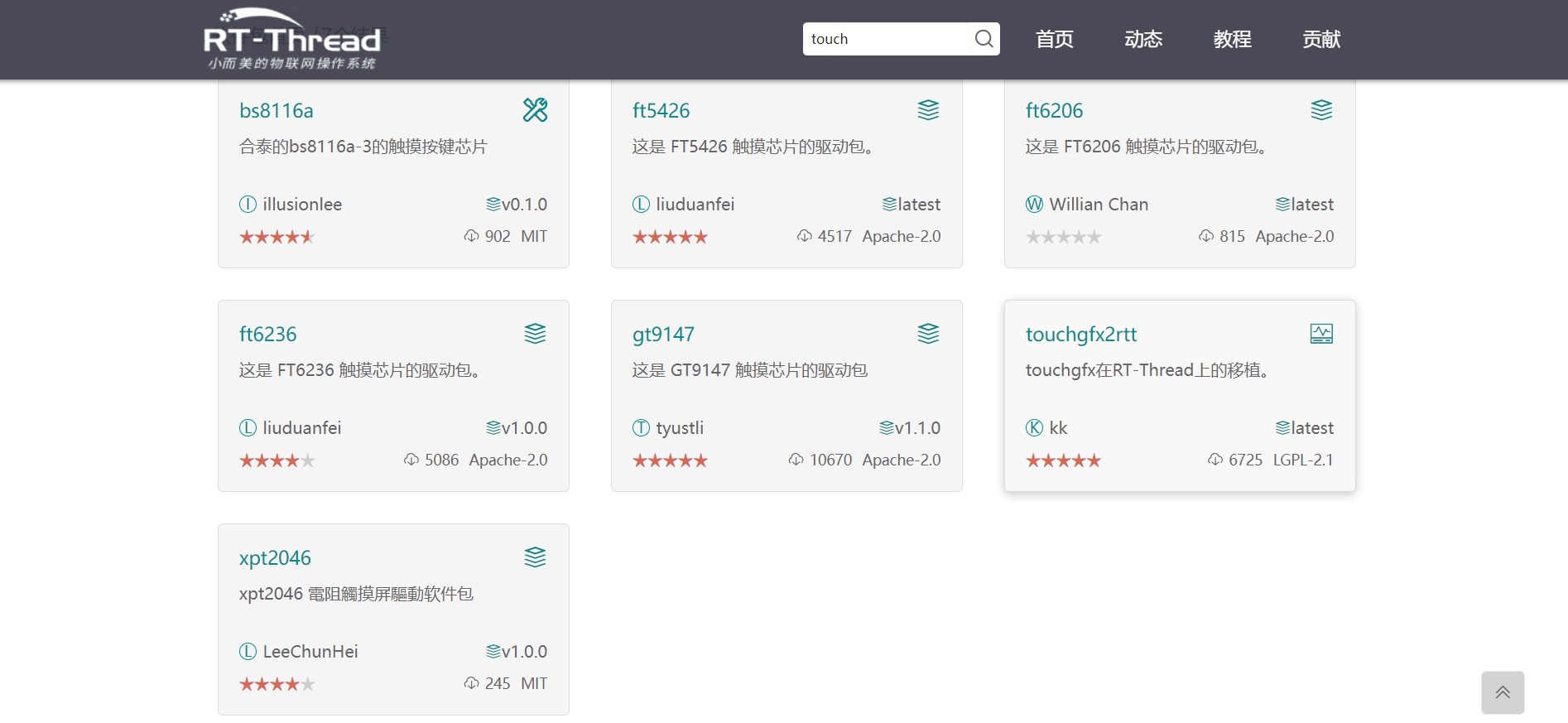Touch Screen Driver
This section describes how to use the Touch framework of RT-Thread to connect the touch screen driver to the LVGL input device framework.
At present, RT-Thread's Touch framework and touch driver software package are already very complete, covering a variety of commonly used touch chips:

Here I take stm32f469-st-disco BSP as an example. This development board has two touch chips in different batches, namely FT6336 and FT6206. Here we take FT6336 as an example. First we should check the chip manual:


Why do we ask you to read the data sheet first? Obviously, the software package does not support the FT6336 touch chip. When we look up the data sheet, we know that they belong to the FT6x36 series of touch chips. Then we can know that the software package contains the FT6236 touch driver. Therefore, we can use this touch driver for porting.

For details, refer to: Software Package Introduction
Select the specific I2C bus according to the schematic diagram (according to the communication method of your own BSP)
Enable the touch driver framework of the software package
Select a specific touch driver software package
Add in LVGL configuration item
select BSP_USING_TOUCH_FT6X36
3.2.1 Touch Hardware Initialization
Here is how to use the software package:

3.2.2 LVGL output device initialization
3.2.3 Complete LVGL's read callback function input_read
For this, please refer to the usage of Touch framework in RT-Thread Document Center :

Last updated
Was this helpful?